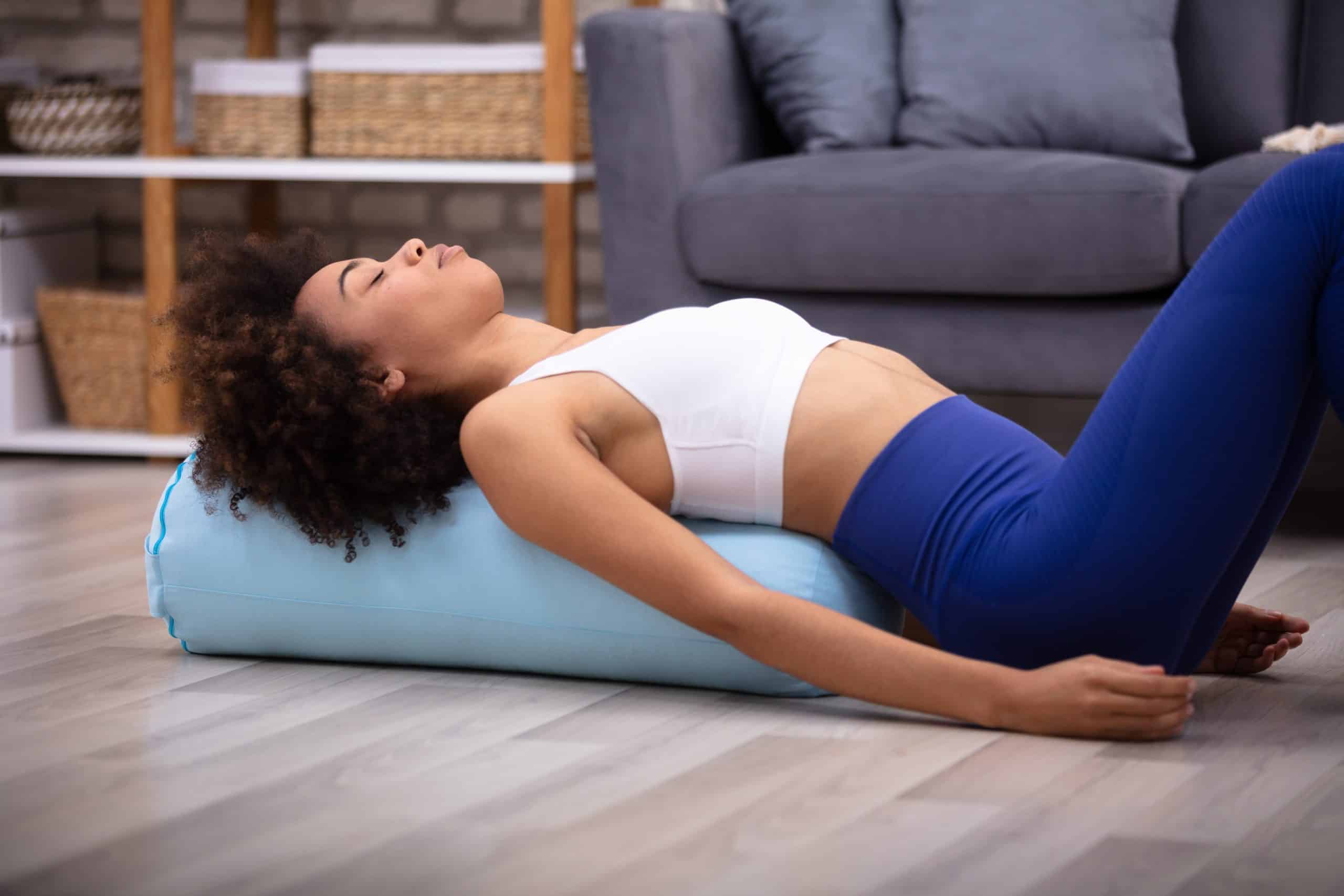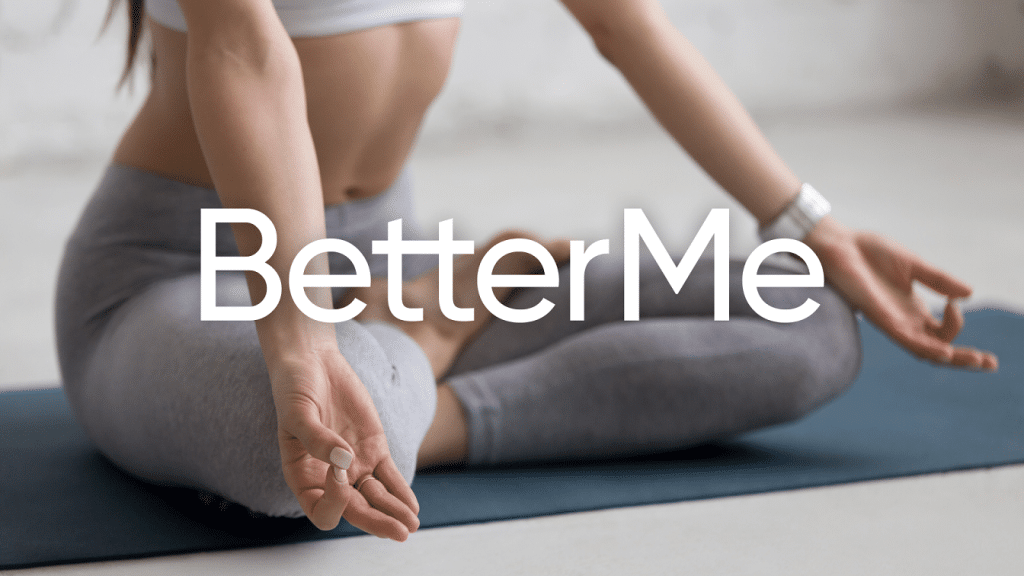The science behind meditation is well-studied. It’s a powerful tool for relaxation, stress relief, and can even improve one’s quality of sleep (1). And for many, it’s an essential part of a healthy lifestyle. While some people find it easy to slip into a deep state of relaxation while seated in silence, there are some who struggle to reach that same level of relaxation. Partly because, in their minds all they can think about is how uncomfortable the chair or cushion they’re sitting on feels. Fortunately, there are a few simple changes you can make to the meditation session that will improve your overall experience and help you reach the desired level of relaxation. One of the easiest and most effective ways to do so is by using pillows and cushions. Not sure which ones, or how to use them? We’ve got you covered with this detailed guide on how to use pillows and cushions for meditation.
Tip 1: Buying The Right Cushion
The word “right” in this context can mean different things to different people. That’s why buying meditation pillows or cushions can quickly get confusing.
While most pillows or cushions can offer some sort of comfort, the best kind will be specific to your needs and preferences when it comes to support and comfort. However, there’s a baseline of what you should be looking for, no matter the type of cushion you buy.
Ergonomic Design
First, look for pillows with an ergonomic design.
Ergonomy is simply the combination of science and design that creates products specifically tailored to your body. This will provide the best support for your back, neck, and spine – the key areas that need support when meditating.
Naturally, you’ll look at the shape of pillows you’re buying. Here you’re faced with one of two options: zafu or zabuton.
Zafu is a round cushion and is the most popular choice for seated meditation. It’s designed to elevate your hips and make the cross-legged position more comfortable.
Zabuton, on the other hand, is a flat cushion that you can put underneath your body as a kind of bedding. It provides extra padding and makes it easier to stay in the same position for extended periods of time without getting sore or uncomfortable.
If you’re not ready for cross-legged meditation, zabuton is a great choice as it can be used with other sitting or kneeling postures.
Material
Secondly, you want to consider what’s in and around pillows. When it comes to stuffing, natural materials like buckwheat hulls, kapok fiber and cotton are the best choices as they provide the right amount of support and comfort.
Another important factor is the cover material.
A good quality cushion should have a tightly woven and durable cover that will keep the inside material clean and dry. It should also be able to withstand regular washing since meditation cushions can quickly accumulate dirt and sweat.
Cotton, hemp, and organic cotton are great materials to look out for. A removable, washable cover is always a plus.
Size And Weight
The dimensions of the cushion should also be taken into consideration. Consider how tall you are and make sure to buy a cushion that’s the right size for your body.
You don’t want to be cross-legged with one knee or hip higher than the other. As for weight, go for light and portable cushions that you can easily move around or carry with you when you decide to try out a new meditation spot.
Durability
Durability is key.
It’s important to look for a cushion that is made from heavy-duty materials so it can withstand frequent use without flattening and losing its shape. While it may cost more upfront, a durable cushion will be worth it in the long run.
Style And Aesthetics
Finally, if you’re looking to add a bit of beauty to your meditation spot, cushions with interesting colors and patterns can be great. The idea here is to make your meditation space more inviting and cozy. Of course, you want to ensure that the cushion still looks nice after a few washes.
Read More: 6 Common Meditation Challenges And How To Overcome Them
Tip 2: Pose, Positions, And Correct Posture
Now that you’ve settled on a pillow or cushion that suits your needs, it’s time to discuss the difference between pose, position and posture.
Pose refers to the larger body shape you should strive for when meditating. Think of it as the general “shape” you want to be in when meditating. There are no hard and fast rules on what the best pose is, but there are a few that can help you find your comfort zone.
We highly recommend the cross-legged pose with a straight spine and chin slightly tucked in.
This is the classical meditation pose, but you can certainly adjust it to make it more comfortable for your body. This pose calls for a plush, or firm (depending on what you prefer) cushion to provide the necessary support.
Here are other poses you can experiment with:
-
Kneeling Position
Kneeling on a cushion or mat with your back straight, hands resting in your lap or on your knees
-
Seated Position
Sitting in a chair with feet flat on the ground, palms resting on thighs. Use a cushion or bolster to make sure your spine is straight.
-
Lying Down Position
Lying on your back with your arms by your sides. Support your legs and head with pillows or cushions for added comfort.
Position is the way you place your arms, legs and feet while in a certain pose.
Many people prefer to keep their hands on the knees, palms up, as this helps to maintain balance and relaxation.
You can also place your hands in a prayer position, palms together over the belly. Experiment with different positions and see what works best for you.
Other positions include:
-
Hands On Knees
Palms up or down, fingers pointing forward
-
Mudra Hands
Palms together at the heart center
-
Arm Resting
Arms resting on the sides of the cushion, palms up or down
Posture is all about keeping your body in alignment. Make sure your spine is straight and the crown of the head is pointing towards the sky.
Keep your chin slightly tucked in and your shoulders relaxed. Your abdominal muscles should be engaged to keep your core stable. Make sure you’re not slouching and that your neck is in a neutral position.
Some signs that your posture needs adjusting would be stiffness in the neck or back, or a feeling of restlessness or fatigue. Make small adjustments to your posture if needed and pay attention to how it affects your experience.
The seven-point meditation posture is a great way to check in with your body and make sure you’re in the correct position. This involves checking seven parts of the body and making sure they’re aligned.
BetterMe: Meditation & Sleep app can help you transmute stress into serenity, pull you up from the doldrums, free your mind from the cares and worries of the world, quell racing thoughts and infuse you with tranquility! Start using it now and change your life!
We break down the seven point meditation posture in more detail below:
-
Hips
If seated, make sure your hips are higher than your knees. If you’re in a kneeling position, make sure the hips are even with the knees.
-
Spine
Keep the spine straight, imagine a string pulling you up from the crown of your head.
-
Shoulders
Relax your shoulders away from your ears. Drawing them back ever so slightly will help keep your spine in alignment and open up your chest.
-
Chin
Tuck in the chin ever so slightly. Imagine a string pulling up from the crown of your head and lightly draw the chin in. You may also turn your head slightly to the left or right.
-
Hands
If in the cross-legged pose, rest your arms on your knees with palms facing up. You can also place your hands in a prayer position or rest them by your sides.
-
Jaw
Relax your jaw and tongue. Let the tip of your tongue rest on the roof of your mouth and let go of any tension in that area.
-
Eyes
You can either keep your eyes open or closed, whatever feels best for the practice. If you keep them open, look slightly downward and set your gaze on a spot in front of you.
Tip 3: Get Your Mind Right
Discomfort isn’t always physical. Even with the best meditation pillows and cushions, your mind can still wander and take you off course. A wandering mind is normal, and it takes practice to stay focused.
That’s why it’s important to take the time to understand your thoughts, feelings, and emotions. Acknowledge them without judgment and let them flow. Focus on your breath as a way to anchor yourself in the present moment and let go of any thoughts that arise.
If your mind is still wandering, use an affirmation or mantra to help stay focused. It can be as simple as “I am present” or a phrase that resonates with you such as “I am peaceful and at ease.”
Read More: Meditation State: Find Out How To Induce Deep Meditation
Tip 4: Repeat
Just as with any practice, meditation requires repetition and consistency to see results. Don’t be discouraged if you don’t experience a profound change the first few times. The more consistent you are, the more natural it will become.
Start with a few minutes of meditation each day and gradually increase it over time. If you don’t have the time to sit for a long period, focus on taking mindful moments throughout the day.
Remember, meditation is a process and you don’t need to rush it. Enjoy the journey and feel free to experiment with different cushion materials, poses, and practices.
The Bottom Line
Finding comfort and stability while meditating can help you to have a more mindful and meaningful experience. By following these four tips, you’ll be able to find the perfect cushion, get into the right pose, and stay focused so that you can reap the full benefits of meditation. Happy meditating!
DISCLAIMER:
This article is intended for general informational purposes only and does not serve to address individual circumstances. It is not a substitute for professional advice or help and should not be relied on for making any kind of decision-making. Any action taken as a direct or indirect result of the information in this article is entirely at your own risk and is your sole responsibility.
BetterMe, its content staff, and its medical advisors accept no responsibility for inaccuracies, errors, misstatements, inconsistencies, or omissions and specifically disclaim any liability, loss or risk, personal, professional or otherwise, which may be incurred as a consequence, directly or indirectly, of the use and/or application of any content.
You should always seek the advice of your physician or other qualified health provider with any questions you may have regarding a medical condition or your specific situation. Never disregard professional medical advice or delay seeking it because of BetterMe content. If you suspect or think you may have a medical emergency, call your doctor.













